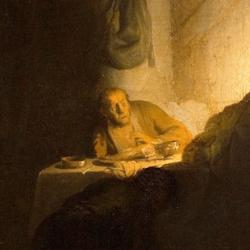Beginning in 1559, the magistrates of the German city of Wesel, in the North Rhine-Westphalia region, required the citizens to commune together (Jesse Spohnholz, “Multiconfessional Celebration of the Eucharist in Sixteenth-Century Wesel”). The city had been the site of intra-Lutheran struggles, and Calvinist immigrants were moving in. Worried about public peace, city leaders forced intercommunion in order to bind different groups into one. They adopted an evangelical liturgy (1559) drafted by Hermann von Wied in consultation with Martin Bucer.
It wasn’t merely pragmatic politics. Gerhard Veltius urged Christians of different sorts to recognize one another as Christians: “St. Paul himself forbade that we should be Paulist, Cephalist, or Appolonian, and similarly Luther [asked] that we should not be Lutheran, since none of these men died for anyone . . . it is enough that they were called Christians. They [the ministers] had therefore not allowed to the Lord’s Supper any Calvinists, Martinists, Lutherans, or any others. It is enough that they are called Christians . . . . who follow God’s word.” When Calvinists objected to the monks, Veltius said that they should be allowed to sing, since their hymns were Christian hymns, although sung in Latin. Catholics were considered part of the Christian family.
It wasn’t entirely peaceful. Many complaints were brought to the city council. Monks chanted Catholic hymns at the altar during the service, which offended Calvinist residents. The churches retained much of their medieval adornment—multiple altars, saints, Mary, devotional candles before images of the saints. Clergy wore vestments. The pastor placed the bread in the mouth of each communicant. Calvinists asked for a separate communion service, without vestments, candles, altars, but the city council refused: “attendance at this mixed communion service remained the sine qua non for legal residence in Wesel.” Some Calvinists withdrew from communion altogether. The consistory admonished them to attend, but did not excommunicate those who refused.
On the other hand, as Spohnholz writes, “Lutherans protested that they held contempt for the local communion ritual ‘because the ministers make no difference between the Calvinists and the adherents to the true Augsburg Confession and openly allowed the people who adhere to Calvinism to the Lord’s most esteemed Supper and Sacrament.’” A horror indeed.
For their part, Catholics sometimes retreated to the Masses held by the town’s religious orders, which were permitted to continue operating.
Shared communion focused the tension between confessional purity and communal practice that manifested itself everywhere in the sixteenth century. By the early seventeenth century, this experiment in multi-confessional eucharist had come to an end, as each confessional community was permitted to hold its own services. By 1618, when the Thirty Years’ War started, the confessional communities “had completely split apart.” Confessional purity defeated communal practice.
Yet Wesel’s brief experiment in multiconfessional communion complicates the question of “confessionalization” in the late sixteenth and early seventeenth centuries. The evidence suggests that residents of Wesel wanted to hold together two structures of identity—a confessional identity, and a communal/ritual identity that sometimes ran at cross-purposes to the confessional identity. As Spohnholz puts it, “many people still understood communion as a powerful symbol of a common Christianity and an appropriate tool for expressing social unity, even if they remained unwilling to abandon their devotion to the confessional cultures that destabilized that unity.”
(Spohnholz, “Multiconfessional Celebration of the Eucharist in Sixteenth-Century Wesel,” The Sixteenth Century Journal 39:3 [2008]: 705–729.)













